Shaping Vancouver 2017: The Future of Heritage in Vancouver
Conversation 1: What the Thematic Framework Means for our CityAs part of the Shaping Vancouver 2017 series, event focused on the new thematic framework being used to update the Vancouver Heritage Register under the Heritage Action Plan of 2015.
This framework aims to reflect newer approaches to heritage which recognize a broad range of heritage values beyond just the architectural. The framework is nearing completion and will change how heritage is evaluated and recognized in the city.
Donald Luxton opened the evening with a short summary of the new thematic framework, outlining its goals, challenges and next steps. A panel discussion followed, where panelists discussed how the framework will inform city policy, if the document could minimize or exclude any parts of Vancouver’s history and discussed how to get community members more engaged in the conversation of values-based heritage.
A short audience question period followed.
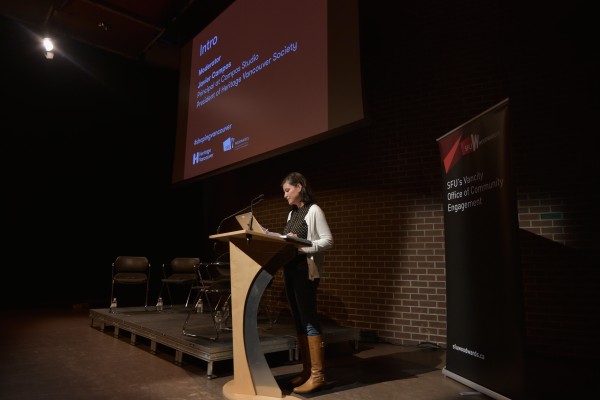
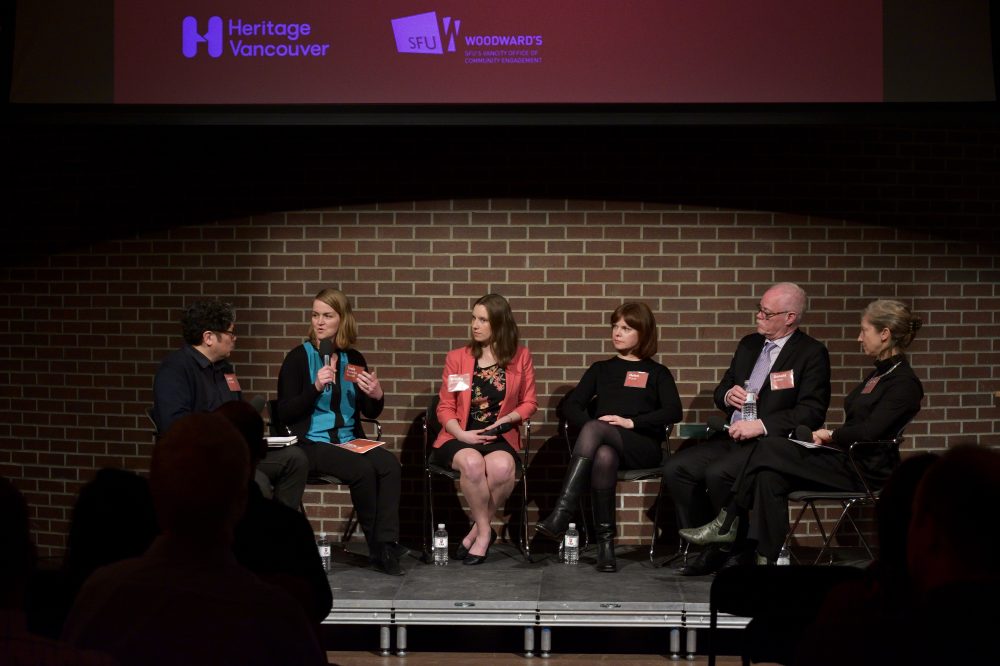
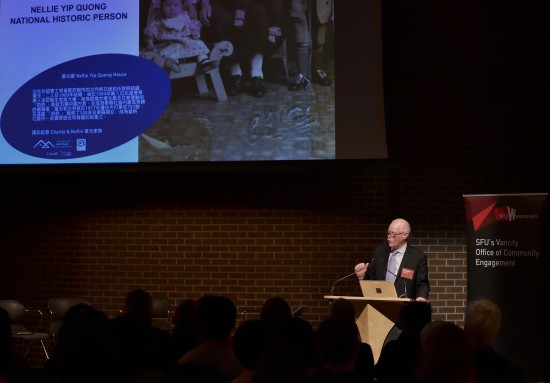
Moderator
Javier Campos
Principal of Campos Studio. Prior to that, Javier was a founding partner of Campos Leckie Studio – whose modernist work has been published nationally and internationally. He has also been involved in many Public Art projects and has won several competitions with Vancouver Artist Elspeth Pratt including a commission entitled Sight Works for the 2010 Vancouver Olympics. He participates as a thesis advisor and guest critic at the University of British Columbia School of Architecture and Landscape Architecture and The John H. Daniels Faculty of Architecture, Landscape and Design at the University of Toronto. He is the President of Heritage Vancouver Society and a Board Member of the Contemporary Art Gallery.
Panelists
Helen Cain
Director of Heritage Policy for Heritage Vancouver, Board Past-Chair of Heritage BC, and the heritage planner at the City of Richmond. She is a community, heritage and development planner interested in the intersections between culture, community and place. Previously, she worked for the City of Victoria’s heritage program where she led the creation of the first city-wide thematic framework in British Columbia and as a consultant planner in urban policy and community engagement around heritage and culture in the creative and sustainable city.
Don Luxton
Principal of Donald Luxton & Associates Inc., a leading heritage and museum consulting firm as well as the principal consultant for the City of Vancouver Heritage Action Plan from 2015 to 2017. Don has been involved in the field of heritage resource management since 1983, he is a well known consultant, advocate, educator and author, and has worked on numerous projects throughout Western Canada, including municipal planning projects, museum development and the restoration of residential, commercial and institutional buildings. In 1983, he was a founding Director of the Victoria Heritage Foundation. In 2009, he was the recipient of the British Columbia Heritage Award.
Britney Quail
Planning Analyst for the City of New Westminster and the lead on a proposal to implement a Heritage Conservation Area in the historic Queenís Park neighbourhood. Britney holds degrees in public policy (Carleton University) and community planning (UBC). She is also President of the BC Heritage Fairs Society, a Heritage BC award winning program for youth engagement in local history.
Joanne Proft
Manager of Community Planning at the University of British Columbia where she leads the development of land use, development and public realm projects at the Vancouver and Okanagan campuses. She holds graduate degrees in Urban Planning and Landscape Architecture from UBC and brings an interdisciplinary and collaborative perspective to projects to help create vibrant, inclusive and transformative urban places and communities. Prior to joining UBC, Joanne worked at TransLink, the Abu Dhabi Urban Planning Council in UAE, several architectural and planning firms locally and internationally and began her career as a heritage planning analyst at the City of Vancouver.
Tanis Knowles Yarnell
Registered planner and member of the Canadian Institute of Planners with 20 years of planning experience in the private and public sector. She has been with the City of Vancouver since 2006, initially facilitating heritage projects seeking incentives through the city’s award-winning Heritage Building Rehabilitation Program. Tanis served as a planner in the Downtown Eastside for many years, where she worked on numerous neighbourhood planning programs and projects, including land use policy development, community engagement, and social and economic revitalization initiatives. Tanis’ current focus is implementing the Heritage Action Plan, which in 2015 resulted in the establishment of Vancouver’s first Heritage Conservation Area and aims to renew and modernize the city’s heritage conservation program for years to come.
What the New Thematic Framework Means for Our City
The Vancouver Heritage Register is a policy and guiding document that includes more than 2,200 buildings, landscapes, monuments and archaeological sites. The document, created in 1986, excluded aspects of Vancouver’s heritage that have since had their value recognized. In Luxton’s analysis of the present Vancouver Heritage Register, he identified that its primary gaps in recognition were Indigenous history, ethno-cultural communities and women’s history. The new thematic framework will identify the themes that emerge through Vancouver’s history and the historic context that creates the narrative history of this city.
The new framework is based on the Parks Canada National Historic Sites of Canada System Plan, and served as an overarching guide to the framework’s creation. The 5 themes in Park Canada’s System Plan were modified to create 5 overarching themes for assessing Vancouver’s heritage:
- Habitation
- Economies
- Governance
- Society
- Arts
These 5 themes broadly capture Vancouver’s history but further detail is outlined in its 32 subthemes, which then encompass 103 components. Along with the thematic framework will be a Historic Context Statement, which is a narrative document that summarizes the themes of a community’s history and development. These documents will help neighbourhoods to develop a Statement of Significance, which will better convey Vancouver’s more complete history, and provide direction for current and future conservation policies and activities.
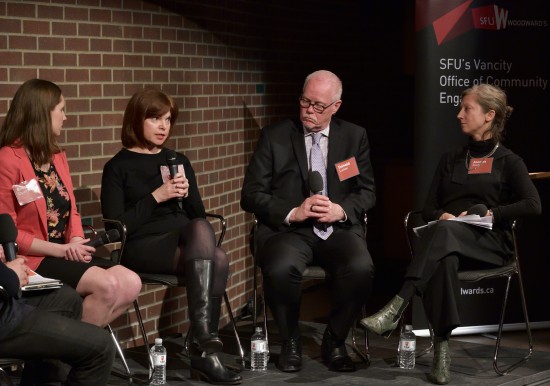
How will a thematic framework inform policy making decisions?
Tanis Knowles-Yarnell responded that this document will make it easier to ascribe Vancouver’s history, find gaps, and prioritize the resources that are not currently on the register. Knowles-Yarnell also noted that this document will provide an information base for a variety of city programs, such as planning, zoning, street naming, and grant proposals. Britney Quail added that a thematic framework such as this would help to define heritage sites more clearly in her work with the City of New Westminster, where the first Heritage Conservation Area for the city is being implemented. Helen Cain spoke on her experience in implementing a thematic framework in Victoria, expressing the usefulness of this document and noting that it provides direction for placemaking decisions within communities. Cain noted that while the heritage register is a great tool, it could be strengthened with the addition of a values-based evaluation of historic sites. Luxton agreed with Cain but added that implementing a values based evaluation would have its challenges; as what is ‘valuable’ can widely vary among a population. Joanne Proft explained how using a thematic framework at UBC changed how heritage is discussed and maintained. Proft noted that considering UBC’s past and evolving cultural themes led to moving away from being vehicular transportation centered towards being pedestrian focused.
Could a thematic framework minimize aspects of Vancouver’s history?
Campos expressed his concern about the thematic framework outlining distinct dates or periods of time as chapters in Vancouver’s history. He worried that this could put significant community sites or landmarks at risk of demolition simply because they are less old. Luxton responded to these concerns stating that unlike the former register, which only considered sites before 1918, the new register will reference emerging subthemes and components. Luxton continued that including subthemes and components up to the present day is an attempt to not prioritize older sites or buildings over younger ones. Panelists all strongly agreed that heritage must be thought of as a continuum and evolving over time. Panelists all expressed the importance of layering Vancouver’s historic sites alongside newer sites that will become cultural resources in the future.
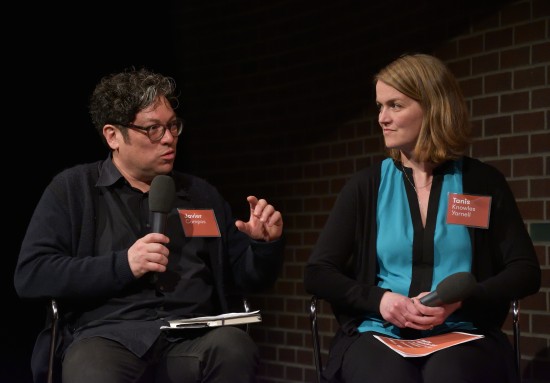
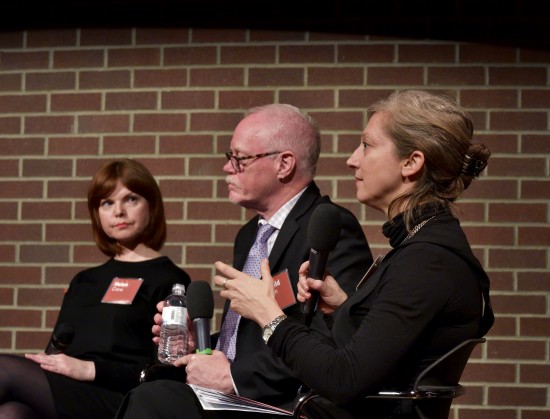
How do we engage the public in the conversation of values-based heritage?
Knowles Yarnell announced that the City of Vancouver will be launching a process that will allow the public to review the new thematic framework, suggesting and possible additions or changes. She suggested that the framework should be viewed as a revisable and modifiable document that supports community involvement. Luxton stressed the importance of gaining community input on this framework as city workers can not speak to the intricacies and experiences of the individuals in a community. Cain added that the thematic framework in Victoria inspired many residents to get involved and have their say on the details of the document. The input Victoria received from the community helped to shape planning programs as well as support urban design initiatives, aspects that community members could actively engage with and benefit from. Knowles Yarnell ended discussion by adding that this framework is a way of creating cultural continuity, allowing us evaluate the past, while discussing a place’s value and place in the future of the city. She acknowledged that these discussions will not necessarily be easy or conflict-free but the framework will increase discussion about how Vancouver should evolve while making conversations about heritage more inclusive.
Questions from the audience
The Gastown Steam Clock is owned by the city and is the one of the most photographed landmarks in Vancouver. Its base says “my steam winds the weights”, but it has only been winding these weights for 35 years. To me, I find it offensive and strange that no one from the Heritage Society has complained about “fake heritage” – as many people believe that this clock is a historical landmark.
Campos questioned how to truly determine what defines fake heritage, and at what point does a fake heritage landmark become an adopted historical site. Knowles Yarnell agreed with Campos, and noted that while many of the ‘historic’ qualities of Gastown were part of an urban vitalization strategy in the 1970’s, they now viewed as part of Vancouver’s historic district. Knowles Yarnell and Campos agreed with the audience member that this type of work needs to be honest, and not attempt to portray itself as true heritage. Quail added that in New Westminster, many community members support residential heritage that poses as historical architecture while being less welcoming to contemporary architecture. Quail noted that if we continue to replicate historical architecture, the present day cultural values and tastes will not be reflected. Cain added that she believes contemporary architecture should not mimic historical architecture, as It does not address the current time. Cain offered that it is rare for architects, planners or builders to push for historic replications but rather it is often the public. Panelists agreed that this issue can be improved by increasing discussion around heritage and community evolution; and how they work together.
There is now a house built in the 1980’s that is recommended for the heritage registry. As someone who is relatively uneducated on the subject of heritage - heritage implies a duration of time that something has been valued as an important part of this city, how do you go about determining what has been valued long enough to be considered heritage?
Quail argued that her approach to defining heritage is recognition of the stories of a place and how these stories contribute to the significance of a place and its surrounding community. Cain stated that in Vancouver anything over 20 years old can be designated as heritage, which is a quite impressive framework. She added that a places value does require some time to emerge, as a site needs be lived in and gather stories in order to establish its place within a community. Campos added that it is necessary to consider significance when discussing heritage, some sites, such as the Vancouver Olympic sites earned significance in the city immediately.
We heard from multiple people of the importance of community engagement and education as a part of the thematic framework process and I’m curious how you approach this at UBC, when such a large proportion of the population are transient members, as students.
Proft responded that UBC has had its challenges in encouraging community engagement but added that neighbourhoods with permanent residents have grown at UBC which this has greatly increased community engagement. She added that the challenge of a largely transient population has emphasized the importance of community themes, and that UBC evaluates how new developments and projects will contribute to creating these themes.
I share a love for heritage buildings and historic districts, my question is what each of you define as heritage. I believe that is important to think and preserve the past but but I hope this document is the first layer in discussing heritage. I would not want this document to freeze the conversation and become the ‘heritage inaction plan’.
Luxton agreed and noted that many mistakenly believe that heritage can be individually measured, however these importance of these sites is influenced by its surrounding community, and the community’s history and stories. Luxton encouraged the audience to think beyond city boundaries when considering heritage and culture. Doing this will lead to a better understanding of Vancouver’s place in British Columbia and Canada, connecting to the landforms and make heritage more inclusive overall. Cain and Luxton both mentioned their frustration with the limitations of the word “heritage”. Cain added that she preferred to think of neighbourhood evolution as ‘placemaking’ which focuses on layering the past and present with how a neighbourhood wants to evolve. Luxton expressed a desire to move away from the terminology “heritage conservation” and move towards “cultural resource management” which provides a broader scope. Campos agreed, adding that their needs to be a shift in the public’s knowledge and understanding of heritage. Knowles Yarnell stated that the framework will provide a broader scope and strengthen planning reasoning. She also added that this document may help city workers better understand why patterns in the city emerge.
The Pacific National Exhibition and the Hastings racecourse are two are two examples that are very entrenched in the neighbourhood and there are obviously conflicting opinions on the future of these sites – where do these places fall in this conversation and what is your opinion on these specific sites?
Luxton agreed with the audience member, adding that Vancouver’s continuous fair should be recognized as a significant part of the city’s history. Luxton also added that adding the PNE to the heritage register would not stop it from changing or evolving. He stated that he believes the PNE could become a more programmed cultural fair, he also added that action can be taken to make the area a more sustainable, green area of the city. Knowles Yarnell added that there is the possibility that redeveloping the PNE site could serve more the the city with a different use, but added that it is important to recognize the cultural connection many people feel to this site. Proft added these discussions can lead to positive change, adding that reimagining UBC’s central greenery has led to a revitalization of a large area, which has also reactivated a formerly quiet area of the campus.
Campos noted his surprise that housing and character homes had not yet come up in the conversation, suggesting that it will be the information people care most about. Knowles Yarnell stated that many low-density areas will have to evolve to accommodate more people but also added that with increased community dialogue about heritage, it will be easier to understand what areas should or should not be a heritage conservation area. Luxton responded that the framework will make suggestions and recognize the value that residential areas and character homes have. The document will display what resources are scarce, and allow us to understand what areas or sites need to be prioritized. The framework also acknowledges examples that are already removed from the city, which allows us to catalogue and reference history. Luxton stressed that this document is not the final solution in the discussion of heritage conservation but is the start of changing how neighbourhood character is defined.
This conversation is missing landscape architects and transportation officers. Cambie has evolved to become a corridor that does have have any view access, and is completely out of touch with human scale, it’s changed the entire feel of the neighbourhood.
Cain responded that Cambie is a perfect example of how the thematic framework can be used to identify themes in a neighbourhood to write statements of significance for an area. She stated that understanding the overall city themes and then breaking them down smaller to the community level will help city workers to understand what is important to the community. Knowles Yarnell added that neighbourhood planning needs to relate to the systems around it as well, acknowledging that changes that the city as a whole are undergoing, she suggested that many formerly low density areas will have to evolve to accommodate more as the city population now requires it. Campos stated the importance of allowing development to occur organically, which is did not happen along Cambie and led to high density corridors that are uncomfortable and unwelcoming to pedestrians. Luxton added his concern for other areas in Vancouver, such as Commercial Drive, which are not experiencing the immense pressure to densify like Cambie. Cain suggested that there needs to be further discussion about what is important in a neighbourhood and what does the community want going forward. Luxton finalized the discussion by stating the excitement and fear that many Vancouver residents feel over Vancouver’s rapid growth. He noted that the intent of this document is not to prevent change, as it would be unrealistic to do so, but rather define the character, determine what’s important to each community and change to accommodate the coming growth. He finished by stating that heritage is a part of what goes continues to exist in a community, but it is not the only thing.
We acknowledge the financial assistance of the Province of British Columbia. Thank you to SFU’s Vancity Office of Community Engagement for co-presenting the series.
All photo credits go to roaming-the-planet.